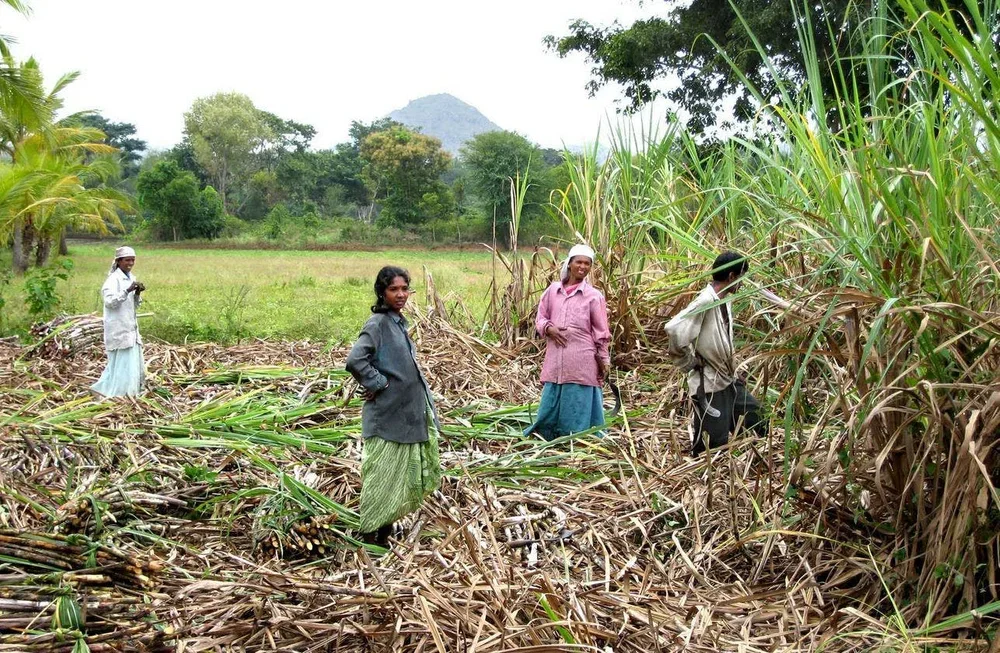The ‘take-make-dispose’ mantra of the linear economy has created infinite problems for our planet by plundering its finite resources for as long as one can remember. We use unsustainable materials like plastic to create products like bags and crisp packets, which are thrown away after a single-use. Heading straight to landfills or incineration, such materials will most likely cause our planet to go up in flames one day. In case you haven’t been paying attention, the heatwaves in South Asia and the Australian bushfires serve as trailers to the scariest horror movie in history – our extinction. The only way to stop this is by switching to the circular economy that prioritises using organic materials that can be reused, repaired and/or returned to nature, safely. By closing the loop and reducing waste to an absolute minimum, we will be able to pass on a sufficiently habitable planet to children and grandchildren.
As agricultural output increases, so will agricultural waste
On the subject of procreation, the global human population is set to cross 10 billion by 2050! To feed us all, agricultural production will also need to scale greater heights. In the last 50 years, agricultural production has tripled, generating a large amount of waste at every step of the production process, with agricultural solid waste being burnt at the end. This agro-industrial waste pollutes the air, water and land, makes people very ill and emits greenhouse gases that exacerbate climate change. Among the many benefits of using agro-waste as a raw material is that it solves several interconnected environmental problems at source. Instead of using raw materials like plastic and wood that catalyse climate change, we should stop wasting time and look at waste as a resource.
Don’t waste waste
Let’s take a look at a country that’s an agricultural powerhouse and also poised to suffer some of the earliest and worst effects of climate change- India. It is the world’s second-largest producer of food and generates about 350 million tons of agricultural waste annually. “Due to the abundance of agro-industrial waste, developing countries suffer from the permanent lack of viable alternatives for the recovery and reuse of these precious inputs, which is normally incinerated, increasing the production of greenhouse gases, contributing to the loss of energy potential, worsening health crises and affecting the population’s quality of life (Ravindran et al., 2018).”
Sugarcane: The sweetest raw material there is
Better known for their rice, wheat and cotton, Indian farmers consider sugarcane a ‘holy crop’ as it’s easy to grow and can be harvested twice a year. Sugarcane should also be christened ‘holy’ by the paper and packaging industry because of a certain byproduct – bagasse. After the cane juice is extracted from the sugarcane plant, this dry and fibrous material called bagasse is obtained, which is widely used as a biofuel to generate clean and renewable energy. Apart from this, it has characteristics similar to that of wood pulp and is also used to make paper and packaging products. Sadly, this agricultural solid waste is widely burnt by the farmers as a quick and inexpensive way to clear the land for the next harvest. By using this waste as a resource, that’s generated twice a year, the paper and packaging industry can solve 2 problems with one masterstroke. Not only will the number of air pollution-related deaths go down, it will also create additional income for the farmers and this model can be replicated in any country with a high agricultural output.
One material, many benefits
Adding to the benefits of using agro-waste as a raw material is its ‘plug and play’ quality. Once this waste has been converted into agro-pulp, as an alternative to the wood pulp, it can work on all exciting machines that create traditional wood-pulp products. Its seamless integration into all existing supply chains should only make its case for mass-adoption even stronger. Finally, agro-waste materials can return to nature safely and quickly through widely practised end-of-life streams like recycling, composting and biodegradation. We are living in the ‘Decade to Deliver’ and whatever we do until 2030 will ultimately decide the fate of our planet.
We still have a long way to go
Sadly, the world is still cutting down 1.5 acres of forest everyday and producing 300 million tonnes of plastic every year. Global temperatures are rising, plastic is already in our bloodstream and pretty soon there will be more plastic than fish in our oceans. Sometimes we hear “there’s nothing as price-competitive as plastic”. Well, almost everything is more ‘life-competitive’ than plastic! Coming to wood, please note that almost 50% of all deforestation is commodity-driven. Why not look at alternatives and let trees serve their higher purpose? – creating oxygen and trapping carbon!
There’s a scarcity of what we currently use (plastic and wood) and an abundance of what we should be using (agro-waste) but we continue making the wrong choices. To educate is to empower, so apart from creating thoroughly sustainable products we’re doing our bit to enlighten you and we hope you will pass on this information far and wide. Our current raw materials are giving the planet a raw deal. So let’s close the loop before our fate is sealed, with a kiss of death from mother nature!





